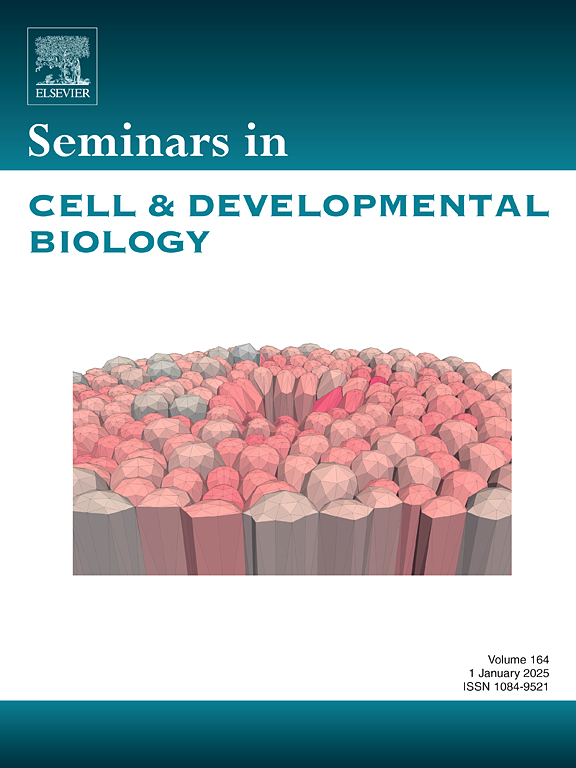Mechanical force-driven cell competition ensures robust morphogen gradient formation
IF 6
2区 生物学
Q1 CELL BIOLOGY
引用次数: 0
Abstract
Morphogen gradients provide positional data and maintain tissue patterns by instructing cells to adopt distinct fates. In contrast, morphogen gradient-forming tissues undergo dynamic morphogenetic movements that generate mechanical forces and can disturb morphogen signal transduction. However, the interactions between morphogen gradients and these forces remain largely unknown. In this study, we described how mechanical force-mediated cell competition corrects noisy morphogen gradients to ensure robust tissue patterns. The Wnt/β-catenin morphogen gradient—that patterns the embryonic anterior-posterior axis—generates cadherin-actomyosin interaction-mediated intercellular tension gradients—termed mechano-gradients. Naturally generated unfit cells that produce noisy Wnt/β-catenin gradients induce local deformation of the mechano-gradients. Neighboring fit cells sense this deformation, resulting in the activation of Piezo family mechanosensitive calcium channels and secretion of annexinA1, which specifically kills unfit cells to recover morphogen gradients. Therefore, mechanical force-mediated cell competition between the morphogen-receiver cells supports robust gradient formation. Additionally, we discuss the potential roles of mechanical force-driven cell competition in other contexts, including organogenesis and cancer.
机械力驱动的细胞竞争确保了强大的形态梯度形成
形态发生梯度提供位置数据,并通过指示细胞采用不同的命运来维持组织模式。相反,形成形态发生梯度的组织会发生动态的形态发生运动,产生机械力并干扰形态发生信号转导。然而,形态发生梯度与这些力之间的相互作用在很大程度上仍是未知的。在这项研究中,我们描述了机械力介导的细胞竞争如何纠正嘈杂的形态发生梯度,以确保稳健的组织模式。Wnt/β-catenin形态发生梯度--胚胎前后轴的模式--产生了由粘连蛋白-肌动蛋白相互作用介导的细胞间张力梯度--即机械梯度。自然生成的不适合细胞会产生嘈杂的 Wnt/β-catenin 梯度,导致机械梯度局部变形。邻近的适合细胞会感知到这种变形,从而激活 Piezo 家族机械敏感钙通道并分泌附件素 A1,专门杀死不适合细胞以恢复形态发生梯度。因此,由机械力介导的形态发生器-受体细胞之间的细胞竞争支持了稳健梯度的形成。此外,我们还讨论了机械力驱动的细胞竞争在器官发生和癌症等其他情况下的潜在作用。
本文章由计算机程序翻译,如有差异,请以英文原文为准。
求助全文
约1分钟内获得全文
求助全文
来源期刊
CiteScore
15.10
自引率
1.40%
发文量
310
审稿时长
9.1 weeks
期刊介绍:
Seminars in Cell and Developmental Biology is a review journal dedicated to keeping scientists informed of developments in the field of molecular cell and developmental biology, on a topic by topic basis. Each issue is thematic in approach, devoted to an important topic of interest to cell and developmental biologists, focusing on the latest advances and their specific implications.
The aim of each issue is to provide a coordinated, readable, and lively review of a selected area, published rapidly to ensure currency.

 求助内容:
求助内容: 应助结果提醒方式:
应助结果提醒方式:


